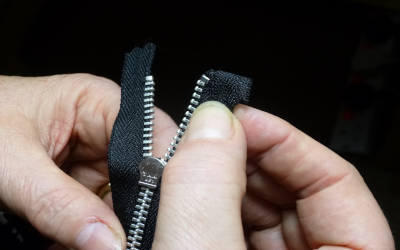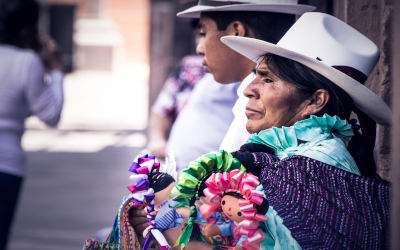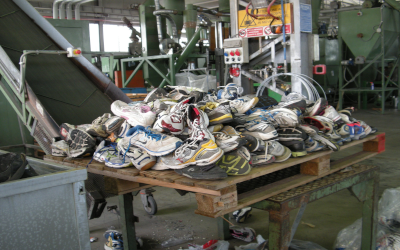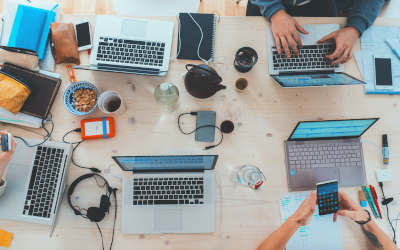
The Circular Economy Opportunity
What is a circular economy?
The way that we currently make and use products follows a take-make-waste system. This is also known as a linear economy. We take materials, make them into products, use the products and then throw them away. Learn more about this in the Life Cycle of Clothing backgrounder.

A linear economy follows a pattern in which people take, make, use, and waste (©2021 Let’s Talk Science).
A circular economy reimagines these steps. The goal of a circular economy is to reduce waste. Materials are recycled instead of sent to the landfill. In a circular economy, products are made with sustainable materials that are easy to recycle and renewable sources of energy.
In a circular economy we:
- Use the fewest raw materials possible and regenerate natural resources
- Use materials as long as possible
- Reduce waste through design and recycling
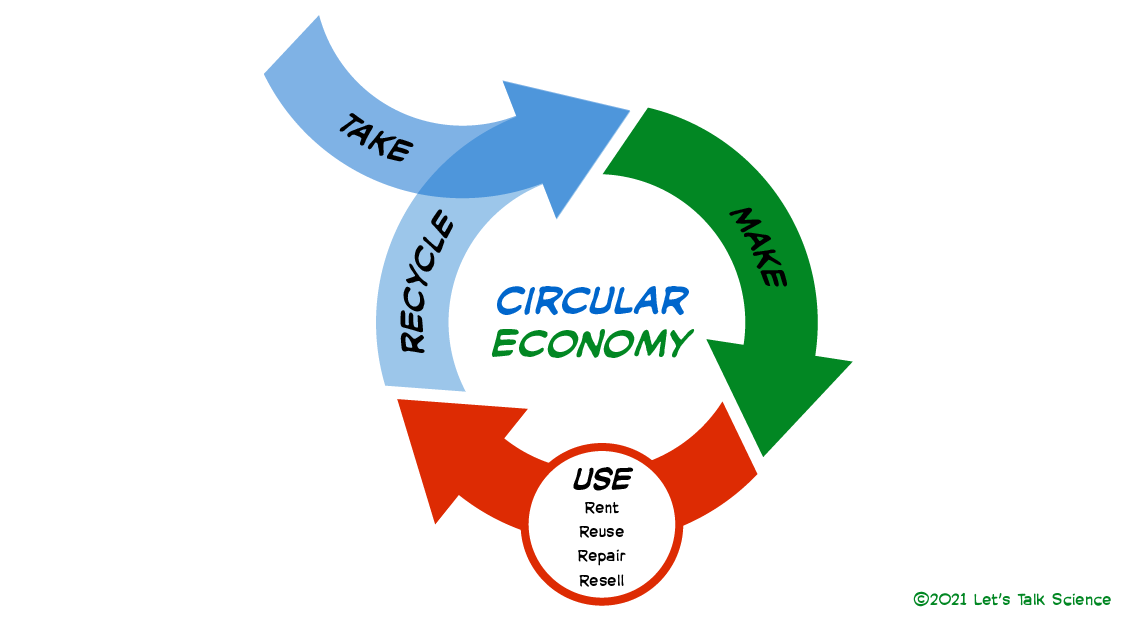
In a circular economy, both raw materials and recycled materials are inputs for the make phase. In the use phase, consumers are encouraged to make clothes last longer through renting, reusing, repairing and reselling.
Image - Text Version
In a circular economy, both raw materials and recycled materials are inputs for the make phase. In the use phase, consumers are encouraged to make clothes last longer through renting, reusing, repairing and reselling.
The flow of a circular economy (©2021 Let’s Talk Science, based on an image from Common Objective).
Questions
Which of these steps can we control with our own choices? Which do companies primarily control?
Circularity and Clothing
How can the clothing industry move towards a circular economy in each of these four areas? The strategies below are inspired by the ReSOLVE framework (Ellen MacArthur Foundation).
Take
We need to consider the materials that we use to make clothing in order to restore our planet. For example, we can make clothes with renewable fibres from plants, such as cotton and bamboo.

Make
Companies should design all products with the end in mind.
This includes:
- Reducing waste in the clothing creation process. This might include using patterns that minimize scraps. It may also involve using scraps for other purposes.
- Using durable materials and high quality sewing so that clothing can be worn for many years.
- Making clothing that is easy to recycle. This includes considering how easy it is to recycle the material used. Clothing made from a blend of materials is more difficult to recycle than clothing made from a single material. Clothing with many buttons or zippers may be challenging to recycle.
- We can also encourage manufacturers to use energy from renewable sources and to limit water usage.

Use
This is where we as consumers have the most impact. There are many ways that we can extend the life of our clothing rather than buying new items. The goal is to keep items looping through the Use stage for as long as possible to reduce waste. We can do this by renting, reusing, repairing, and reselling our clothing. Click the tabs below for some ideas from the Clothing4Climate Actions page:
Renting is a more sustainable alternative to buying new clothes. Renting is especially useful for items of clothing that you might only wear a couple of times. A growing number of companies are providing clothing rentals. Could you rent items of clothing or start a clothing rental business in your community?
Image ©2021 Let’s Talk Science.
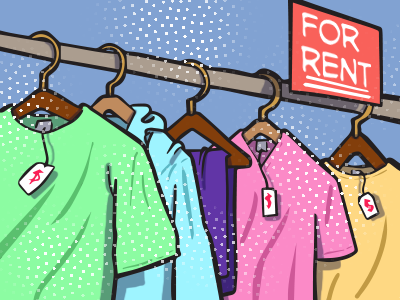
Try to find other uses for items of clothing that you are no longer using. You could do this by upcycling your jeans, restyling your shoes, or starting an upcycling club. Could you start a business that turns clothing waste into something entirely different? This is where we need creative circular solutions.
Image ©2021 Let’s Talk Science.
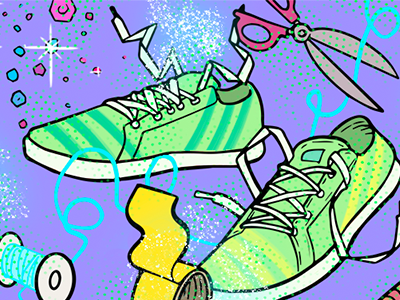
Extending the lifespan of your clothing is an important part of circularity. You can do this by repairing your clothing so that you can use it longer. You can get started by removing stains or mending your clothing.
Image ©2021 Let’s Talk Science.
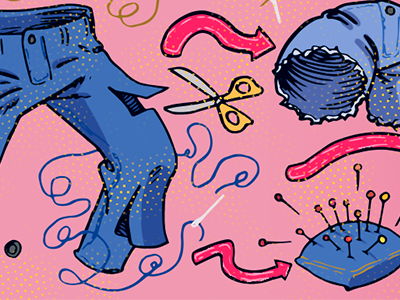
Can you find someone else who wants clothing that you no longer wear? This may involve reselling online or through a thrift store. You could also plan a clothing swap to trade clothing with your friends. This reduces the number of new clothing items needed.
Image ©2021 Let’s Talk Science.
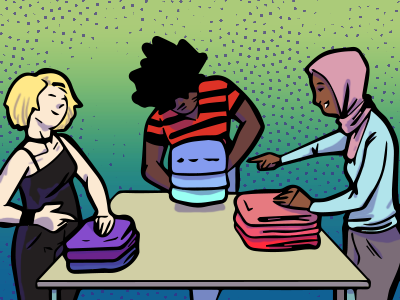
Recycle
In a linear economy, clothing that can no longer be used is sent to a landfill. In a circular economy, materials are recycled instead of thrown away. It can be challenging to recycle clothing into their basic materials. There have been some successes, such as in the recycling of polyester. There is still much research to be done. Communities also need to consider how to help their citizens recycle textiles, as they do plastic and paper.

Businesses, policy-makers, and consumers need to work together to create a circular economy. What are some ways that you could help create a more circular economy?
This backgrounder was written by Kyra Chisolm. Kyra is a Master’s of Geography student at the University of Waterloo. She researches the pathways that small and medium enterprises follow in transitioning to a more circular economy. Let’s Talk Science appreciates the support of the Royal Society of Canada in connecting us with this individual.
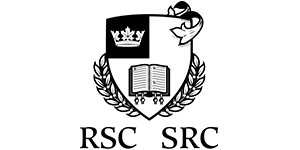
About the Royal Society of Canada
The Royal Society of Canada is a member driven organization that recognizes Canada's leading intellectuals, scholars, researchers and artists in order to help them build a better future in Canada and around the world Let’s Talk Science and the Royal Society of Canada partner to provide relevant content and programs about issues that affect us all – from education to the impact of leading-edge scientific discoveries.
Circular Clothing. (n.d.). Circular Clothing Is The Future.
Ellen MacArthur Foundation. (n.d.). Circular economy introduction.
Ellen MacArthur Foundation. (n.d.). Learning to apply circular economy thinking.
Ellen MacArthur Foundation. (n.d.). Redesigning the future of fashion.
References
Circular Clothing. (n.d.). Circular Clothing Is The Future.
Ellen MacArthur Foundation. (n.d.). Circular economy introduction.
Ellen MacArthur Foundation. (n.d.). Learning to apply circular economy thinking.
Ellen MacArthur Foundation. (n.d.). Redesigning the future of fashion.
